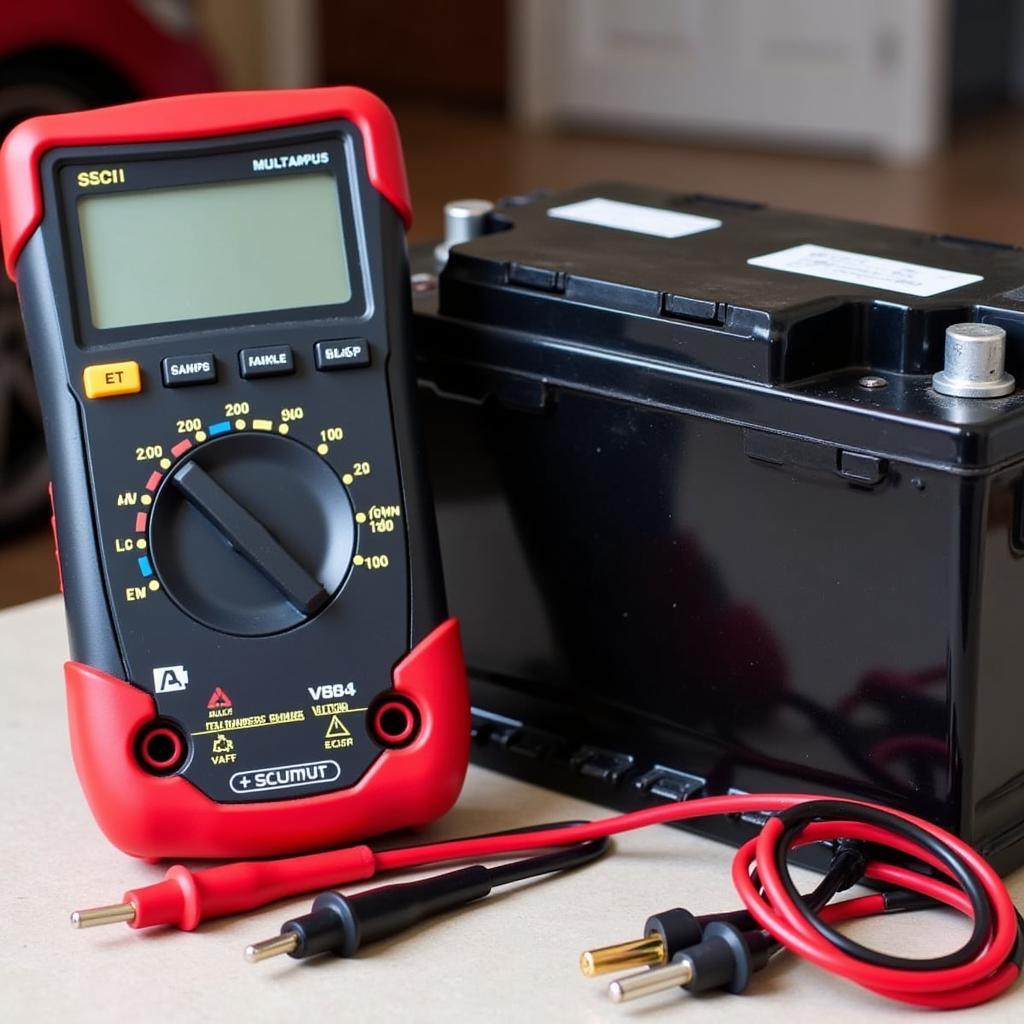The brake warning lamp on your High Mobility Multipurpose Wheeled Vehicle (HMMWV) is a critical safety indicator. If it illuminates, it signals a potential problem within your braking system, demanding immediate attention. This article offers a comprehensive guide to diagnosing and addressing the underlying causes of a lit brake warning lamp in your HMMWV.
Understanding the HMMWV Brake System and Warning Lamp
The HMMWV’s brake system is robust, designed for demanding off-road conditions. It’s a hydraulic system, meaning it uses brake fluid to transmit force from the brake pedal to the brakes at each wheel. The brake warning lamp is triggered by several factors, including low brake fluid, a malfunctioning parking brake, or issues within the hydraulic system itself.
Common Causes of a Lit Brake Warning Lamp
Several issues can cause the brake warning lamp to illuminate. These range from simple fixes like low brake fluid to more complex problems requiring professional intervention.
- Low Brake Fluid: This is the most common culprit. Brake fluid levels naturally decrease over time as brake pads wear down.
- Worn Brake Pads: As brake pads wear, the brake caliper pistons extend further, requiring more brake fluid. This can trigger the low fluid warning.
- Brake Fluid Leaks: Leaks in the brake lines, hoses, or wheel cylinders can lead to a drop in brake fluid and illuminate the warning lamp. Leaks require immediate attention as they compromise braking performance.
- Faulty Brake Warning Light Switch: The switch itself can malfunction, causing the light to stay on even when there’s no actual problem.
- ABS Issues (If Equipped): HMMWVs equipped with Anti-lock Braking Systems (ABS) can experience issues with the ABS module or sensors, triggering the brake warning lamp.
Diagnosing the Problem
Diagnosing the cause of a lit brake warning lamp involves a systematic approach.
- Check the Brake Fluid Level: Inspect the brake fluid reservoir. If the level is low, add the correct type of brake fluid recommended for your HMMWV model.
- Inspect for Leaks: Carefully examine all brake lines, hoses, and connections for signs of leakage. Look for wet spots or drips.
- Check the Parking Brake: Ensure the parking brake is fully disengaged. Sometimes, a partially engaged parking brake can trigger the warning lamp.
- Inspect Brake Pads: Check the thickness of the brake pads. If they are worn down to the wear indicators, they need replacement.
When to Seek Professional Help
If you’ve checked the basics and the brake warning lamp remains illuminated, or if you suspect a more complex issue like a leak or ABS malfunction, it’s crucial to seek professional help. A qualified HMMWV technician has the diagnostic tools and expertise to pinpoint and resolve the problem safely and effectively. Don’t attempt complex brake repairs yourself unless you have the necessary skills and equipment.
Remote Diagnostics and Software Solutions
In some cases, remote diagnostics and software programming can address specific brake system issues. This cutting-edge technology allows specialists to access your HMMWV’s onboard computer remotely, diagnose problems, and even install software updates to resolve certain malfunctions. This can be a time-saving and cost-effective solution for specific situations.
Preventing Future Brake Warning Lamp Issues
Regular maintenance is key to preventing future brake problems. Adhere to the recommended service intervals for brake inspections and fluid changes in your HMMWV’s owner’s manual. This proactive approach can help you avoid costly repairs and ensure optimal braking performance.
“Regular brake system maintenance is not just about fixing problems; it’s about preventing them in the first place,” says John Miller, a Senior Automotive Technician specializing in HMMWV maintenance. “By adhering to the recommended service schedule, you’re investing in the longevity and safety of your vehicle.”
Conclusion
The brake warning lamp in your HMMWV is a vital safety indicator. Understanding its causes and taking appropriate action can prevent serious braking issues. By following the diagnostic steps outlined in this article and seeking professional assistance when necessary, you can keep your HMMWV running safely and reliably. Don’t ignore the brake warning lamp – address it promptly.
“Addressing the brake warning lamp immediately is paramount for safety,” adds Sarah Johnson, a Certified Automotive Diagnostician with extensive experience in military vehicle maintenance. “A proactive approach can prevent minor issues from escalating into major, costly repairs.”
FAQ
- What type of brake fluid should I use in my HMMWV? Consult your owner’s manual for the specific type of brake fluid recommended for your model.
- How often should I check my brake fluid level? It’s good practice to check your brake fluid level at least once a month.
- Can I drive my HMMWV with the brake warning lamp on? It’s not advisable. A lit brake warning lamp indicates a potential problem, and continuing to drive could compromise your safety.
- How much does it cost to fix a brake warning lamp issue? The cost varies depending on the underlying cause. A simple fluid top-up is inexpensive, while more complex repairs can be significantly more costly.
- What is the difference between the brake warning lamp and the ABS light? The brake warning lamp indicates a general problem with the hydraulic brake system, while the ABS light specifically signifies an issue with the Anti-lock Braking System.
- How can remote diagnostics help with brake issues? Remote diagnostics can identify specific electronic faults within the brake system and sometimes resolve them through software updates.
- Where can I find a qualified HMMWV technician? Contact a reputable military vehicle specialist or authorized HMMWV service center.

